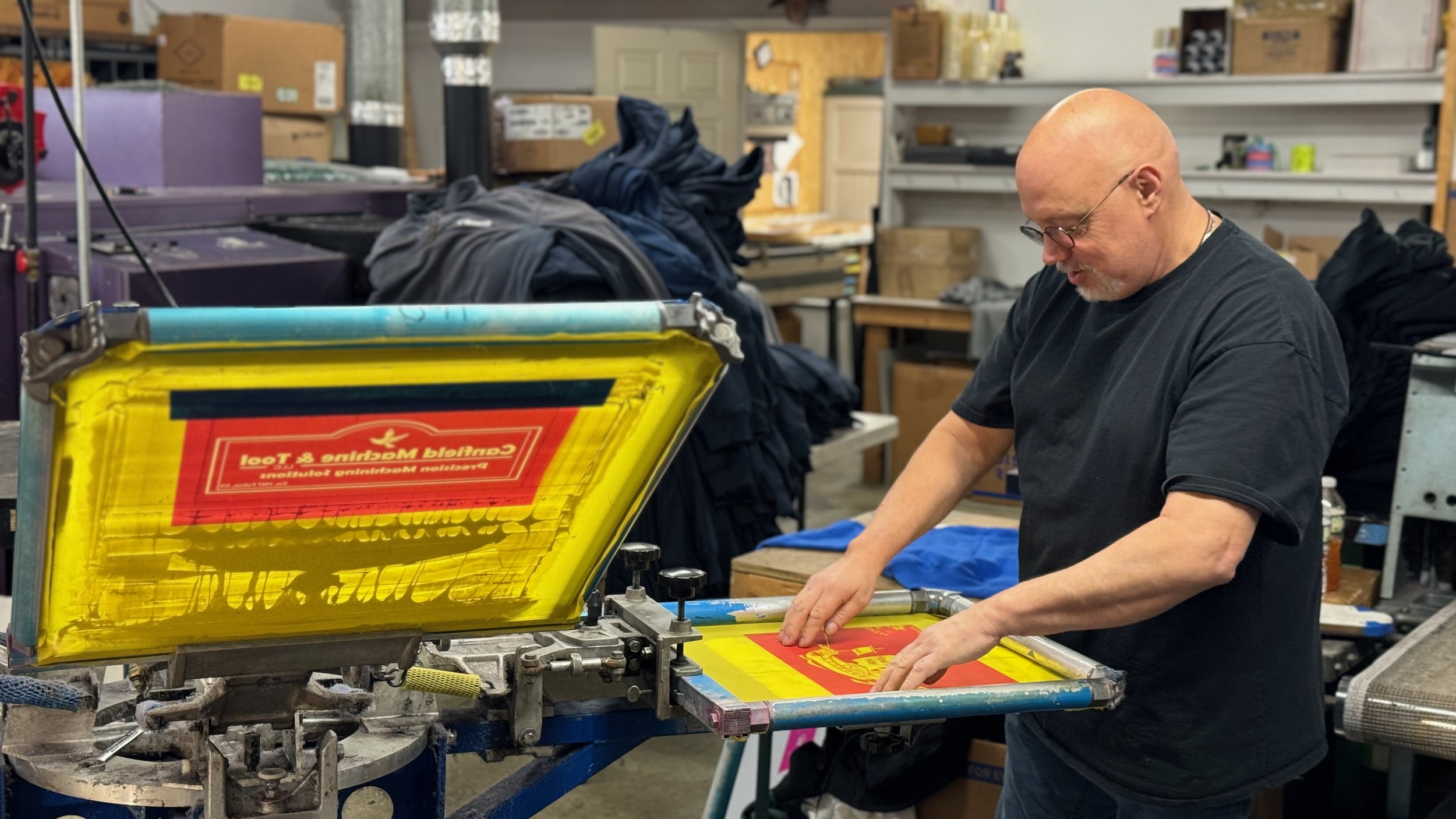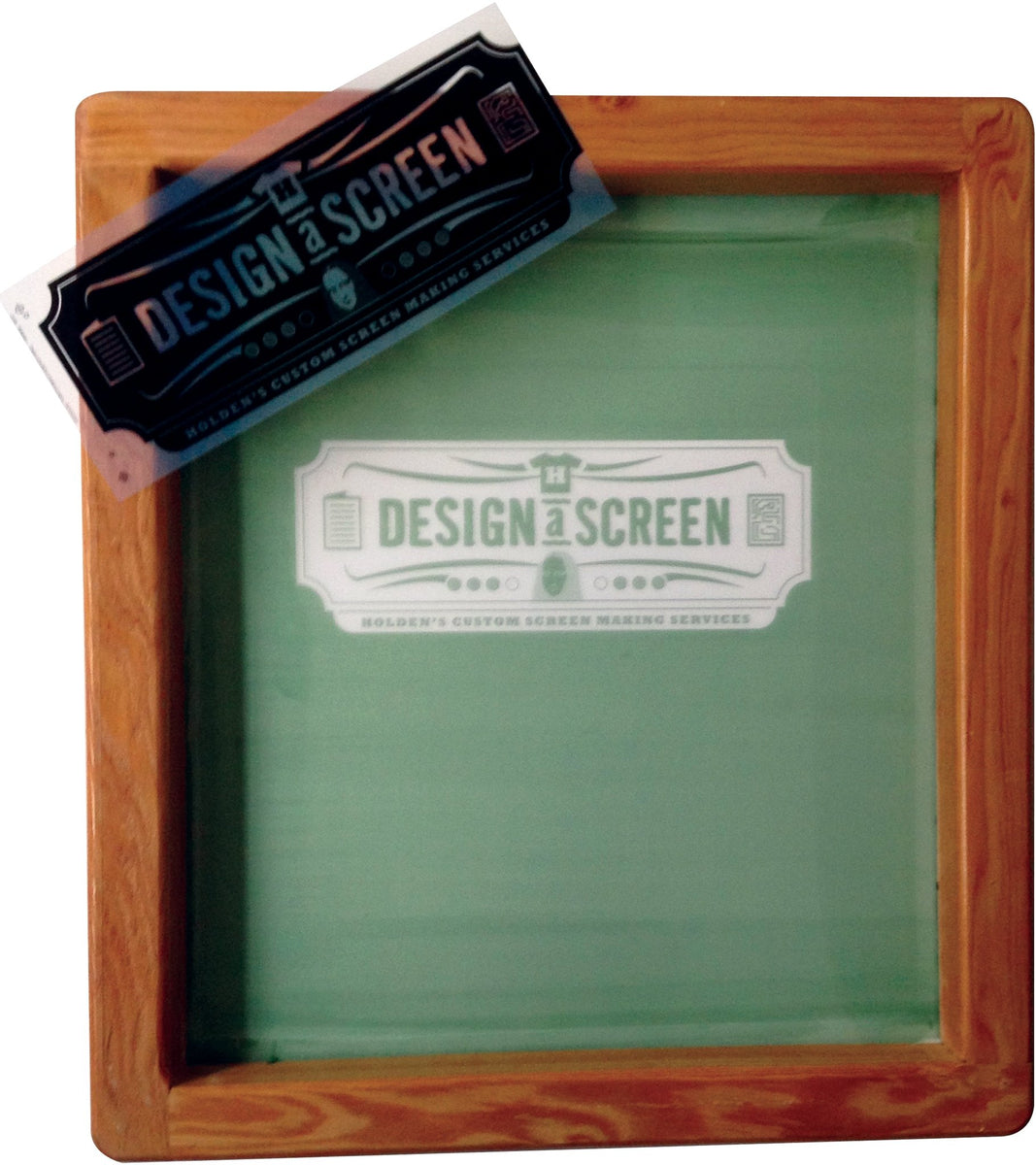Fast Turnaround Custom Screen Printing for Events
Screen Printing Uncovered: Everything You Need to Find Out About Tee Shirt and Garment Printing Strategies
If you have actually ever wondered how those dynamic designs wind up on your favorite tees, you remain in the best place. Screen printing is a fascinating technique that incorporates art with strategy, supplying unlimited opportunities for creative thinking. Understanding the basics, from equipment to ink options, can considerably impact your outcomes. Ready to discover the crucial elements that make display publishing an art type? Let's discover the details that can boost your tasks.
The Essentials of Screen Printing: Exactly How It Functions
When you dive right into screen printing, you'll uncover it's both an art and a scientific research. At its core, display printing entails developing a stencil, or screen, that permits ink to pass through just in specific locations.
Following, you'll mix your inks and prepare your printing surface area. Setting the display over the material, then use a squeegee to press ink via the display onto the garment. This procedure calls for accuracy, as you want clear, vivid prints. After printing, you'll cure the ink with heat, ensuring it complies with the textile and lasts with cleans. Each action is vital, and understanding them will certainly elevate your display printing abilities, transforming straightforward garments into special, expressive pieces.
Types of Display Printing Strategies
As soon as you comprehend the essentials of display printing, it's time to explore the various strategies that can boost your layouts. One prominent approach is traditional screen printing, where ink is pressed with a stenciled screen. This technique is wonderful for strong, lively colors. Then there's water-based ink printing, which uses a softer feeling and is environmentally friendly, yet it requires a various strategy to treating.
An additional alternative is plastisol printing, known for its resilience and dazzling shades, making it a favored for lots of brands. Experiment with halftone printing to produce gradient impacts and complex designs.
Crucial Equipment for Screen Printing
To achieve sensational outcomes in display printing, having the ideal equipment is fundamental. First, you'll need a strong screen printing frame, which holds the mesh that transfers your design onto the garment. Next off, purchase premium mops; these are necessary for applying ink equally throughout the display. You'll likewise call for a great direct exposure system to produce your displays, in addition to a washout booth for cleaning them after use. A dependable warm source, like a conveyor clothes dryer or warm press, is essential for treating your prints to guarantee durability. Do not neglect an appropriate work area, geared up with tables and storage space for your products. Lastly, protective equipment, such as gloves and masks, will certainly keep you secure from chemicals and inks. With the right tools, you'll be well on your means to producing professional-quality prints.
Picking the Right Inks and Products
When choosing inks and materials for display printing, you need to take right into account the type of ink that functions ideal for your project. Consider textile compatibility to assure your styles look wonderful and last lengthy. Discover eco-friendly ink options to make your printing procedure more lasting.
Sorts Of Screen Inks
Choosing the best display ink is vital for accomplishing lively, durable prints that satisfy your task's needs. There are several kinds of display inks to take a look at. Specialty inks, such as glow-in-the-dark or metal, can include unique impacts to your designs.

Fabric Compatibility Considerations
Understanding material compatibility is crucial for accomplishing high-grade display prints, particularly because different materials react distinctively to different inks. When selecting inks, think about the material kind-- cotton, polyester, or blends. For cotton, water-based inks function well, supplying soft qualities and breathability. Polyester, on the various other hand, often requires plastisol inks for much better adhesion and dynamic shades. If you're publishing on blends, you might need to make use of a combination of both types. Constantly examine your inks on sample textile to assure they adhere effectively and preserve shade stability. Furthermore, maintain in mind that textile weight and structure can impact the final result, so picking the appropriate ink and material combination is vital for your job's success.
Eco-Friendly Ink Options
Environmentally friendly inks are ending up being a prominent option for screen printers who wish to reduce their environmental effect while maintaining top quality. When picking inks, think about water-based inks, which are much less harmful and much easier to clean up compared to typical solvents. These inks bond well with materials, delivering vibrant results without hazardous chemicals. You might likewise explore eco-solvent inks that use fewer volatile organic substances (VOCs), making them a safer alternative for both your health and the earth.
In addition, search for inks made from eco-friendly resources, such as soy or vegetable-based choices. By picking the ideal inks and products, you'll not just develop magnificent styles however also add to a more sustainable printing process. Make the switch, and your prints will show your dedication to the setting!
Preparing Your Layout for Display Printing

Submit Layout Needs
To guarantee your design looks sharp and vibrant on material, you'll need to pay attention to file format needs for screen printing. Begin with vector documents like AI or EPS, as they can be scaled without losing quality. If you make use of raster photos, choose high-resolution data, such as TIFF or PNG, ideally at 300 DPI. Prevent using JPEGs, as they can shed quality when resized. Likewise, make sure your design has a clear history to avoid undesirable white edges on your prints. Keep color settings in mind; CMYK is common for screen printing, so transform your RGB designs accordingly - screen printing kit. By following these guidelines, you'll set your art work up for a successful print.
Color Splitting Up Methods
Color splitting up is an essential action in preparing your design for screen printing, and understanding it can significantly enhance your print high quality. You'll require to damage your layout into private colors, as each shade needs a different screen throughout printing. Begin by identifying all the shades in your layout and create layers each. You can make use of software program like Adobe Photoshop or Illustrator to separate and different colors properly. Be particular to save each layer as a different data, generally in a format like TIFF or PSD. This precision not only ensures accurate shade depiction yet additionally simplifies the printing procedure. By focusing on color splitting up, you'll accomplish specialist and dynamic results in your screen-printed garments.
Resolution and Size
Attaining the very best cause screen printing starts with guaranteeing your style has the appropriate resolution and dimension. Preferably, your artwork should go to the very least 300 DPI (dots per inch) for sharp, clear prints. Your last product may look pixelated and unprofessional. if you make use of reduced resolution.
When it comes to size, take into consideration the measurements of your print area. Design your artwork to match the final print dimension, preferably creating it in the real dimensions you'll be printing. By doing this, you'll avoid any kind of unexpected scaling concerns.
Always examine your layout in both vector and raster styles. Vector graphics can be scaled without shedding top quality, making them excellent for screen printing. Preparing properly will assure your style looks fantastic on every garment!
Step-by-Step Screen Printing Refine
Screen printing is a vibrant procedure that enables you to produce vibrant designs on different surface areas. To obtain started, you'll require a screen, solution, and your chosen ink.
Put ink onto the screen and utilize a squeegee to push the ink through the pattern onto the textile. Lift the display very carefully and let the print completely dry. You've effectively screen printed your design.
Tips for Effective Screen Printing Projects
While you're diving right into your screen printing tasks, keep in mind that prep work is key to success. Start by gathering all your products-- inks, screens, garments, and squeegees. A tidy office assists stop unwanted errors, so clean up before you start.
Following, validate your artwork is high-resolution and appropriately sized for your garment. Evaluate your display for appropriate exposure and tidy it completely to stay clear of smudges. When blending your inks, comply with the producer's standards to attain the ideal consistency.
Throughout printing, apply also stress with your squeegee for constant results. Do not rush; take your time to confirm each print fulfills your requirements. After printing, let your garments completely dry totally prior to taking care of or packaging them.
Finally, constantly keep an example of your help future reference. By doing this, you can evaluate your progression and enhance your techniques with time. Pleased printing!

Regularly Asked Concerns
The length of time Does It Take to Establish up a Display Printing Job?
Establishing up a display printing work commonly takes about half an hour to an hour. You'll prepare the displays, mix inks, and change the press. The moment varies based upon complexity and experience, so remain arranged!
Can I Print on Various Material Keys In Utilizing the Same Technique?
Yes, you can print on different material types utilizing the same strategy, however you'll need to adjust your setups and inks. Some fabrics soak up ink in a different way, so experimenting warranties the most effective results for every product.
What Are Typical Blunders to Prevent in Display Printing?
When screen printing, prevent usual blunders like utilizing the incorrect ink, ignoring correct exposure times, or avoiding pre-press checks. Constantly evaluate your arrangement and maintain clean displays to ensure high quality results each time.
How Can I Correctly Clean and Keep My Screen Printing Devices?
To correctly tidy and keep your screen printing equipment, you must regularly wash screens with screen printing kit proper solvents, examine mops for wear, and assure all tools are stored dry and dust-free. Uniformity stops costly repair work and improves efficiency.
Is Display Printing Eco-friendly Contrasted to Other Techniques?
Screen printing can be a lot more ecologically pleasant than various other methods, particularly if you make use of water-based inks and eco-conscious products. By selecting lasting materials and methods, you minimize waste and lessen your influence on the world.
Screen Printing Uncovered: Everything You Need to Know About T-Shirt and Garment Printing Methods
At its core, screen printing involves creating a pattern, or display, that permits ink to pass via just in certain areas. Position the screen over the material, then make use of a squeegee to press ink through the screen onto the garment. One prominent method is conventional screen printing, where ink is pressed with a stenciled display.When selecting inks and materials for display printing, you need to take into account the type of ink that works ideal for your job.